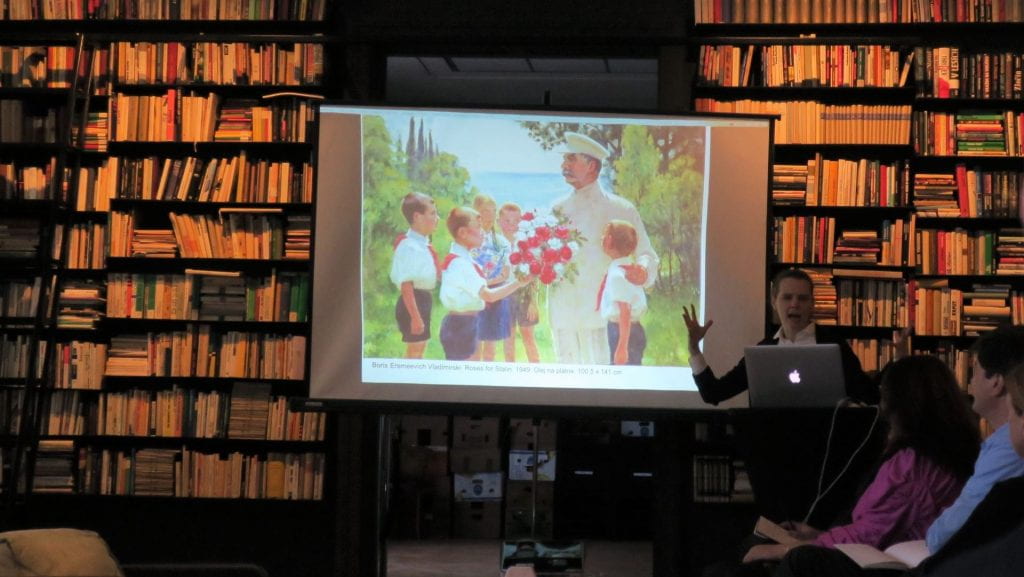Interrupted Song
By confrontations, on 5 November 2019
What does Czechoslovak Socialist Realism look like? Alexandra Kusá, director of the Slovak National Gallery in Bratislava and curator of the 2012 exhibition “Interrupted Song: The Art of Socialist Realism 1948-1956” showed us a number of atypical examples, both in content and form. We saw a Stalin at a museum, looking at a baroque painting; another one listening to a classical music concert; a double portrait of two men swimming together in a visibly homoerotic embrace. Other pieces, though typical in their topics characteristic for Socialist Realism — they were painting and sculptures depicting scenes of factory work or crop gathering — used surprising visual language, either indebted to the great masters like Giotto and Piero della Francesca, or even clearly referencing “debased” modern art styles, such as cubism!
The challenge posed by the Czechoslovak Socialist Realism, however, is grounded not only in iconography or stylistic considerations. Just like with the more general history of art from the communist period, there is a degree of difficulty with discussing what was actually Czecho-Slovak about this art.
Even though Czechoslovakia was a single country for almost five postwar decades, with a single state Artists Union serving all practitioners in the federation, the scenes in Prague and Bratislava remained largely separate. And especially after the split of 1993, there seems to be general pressure to consider the cultural history of Czechia and Slovakia independently from each other. Kusá admitted to us that this issue, and related tensions, stalled her work on the project for an extended period of time. Finally, she decided to deal with this issue in a conceptual manner: In a book Perusena Pesen: Vytvarne Umenie w Casoch Stalinskej Kulturnej Praxe that she published in 2019, she included examples of artworks from the Czech part of the federation among those made by Slovak artists, but had all those objects captioned in the Czech, rather than Slovak, language. “There were fights with the copy editor, but I won!” she told our group.
(Magdalena Moskalewicz)
 Close
Close





